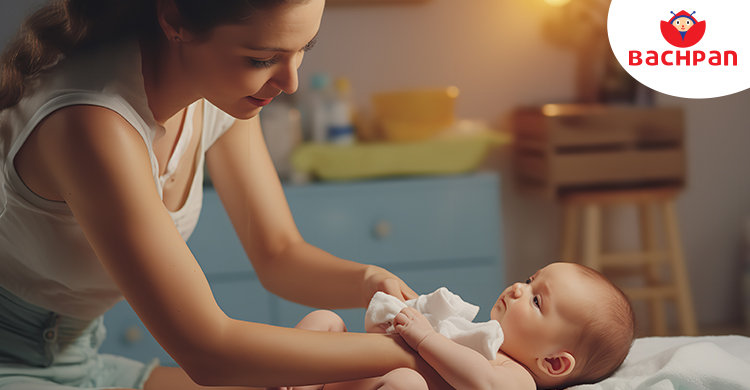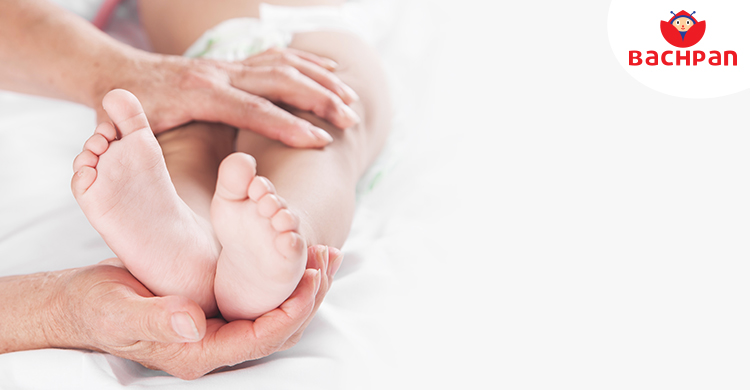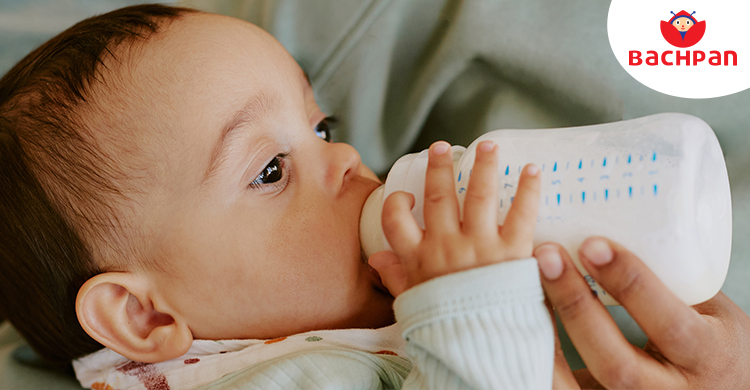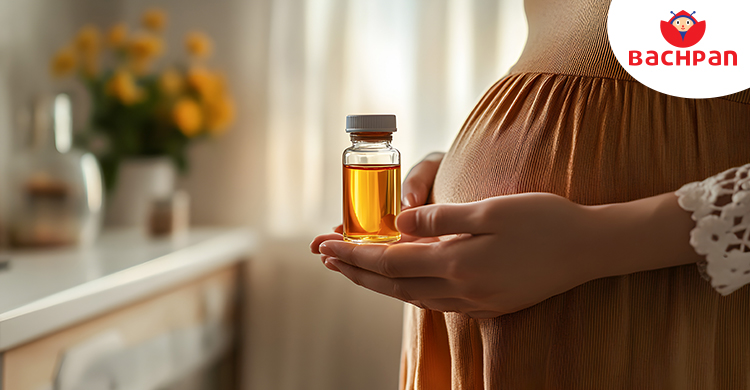Natural Remedies to Relieve Baby Vaccination Pain at Home

The vaccination process for babies is often seen as a painful process by many parents. However, it is important to realize that getting your babies vaccinated is important for their health and proper development. Research has found that childhood vaccination protects babies from developing diseases like Chickenpox, Polio, Hepatitis, etc. New parents usually feel anxious seeing their babies in distress. Don’t worry, we are here to guide you in managing the baby vaccination pain at home.
Understanding Baby Vaccination Pain at Home
Understandably, seeing your baby go through a painful vaccination creates an unpleasant experience. We are here to suggest some home remedies for baby vaccination pain to help you manage and lessen the discomfort of your baby.
Why Babies Experience Pain After Vaccination
When the vaccine is injected into the baby’s thigh or arm, it is quite painful due to its pointed needle. This causes a small bruise or injury, which results in the baby crying or feeling discomfort. Vaccination prepares the immune system to fight real infections later. Since the skin of infants is sensitive, they experience pain and uneasiness.
Common Symptoms After Baby Immunization
Vaccinations do have side effects, but they can be treated with natural remedies to make the babies feel at ease. Common symptoms may include baby swelling after injection, or mild fever that may last about two to three days. Babies may also experience diarrhoea or vomits, which may last up to a week.
Areas of Concern: Swelling, Fever, and Irritability
Swelling, fever and fussiness are all common side effects after a vaccine, but if they last longer than they should, that is worrying. If the baby experiences a high fever and the swelling continues to grow to the extent that the baby is not even able to move the limb, it becomes a matter of concern.
How Long Does Vaccination Pain Last in Babies
The duration of vaccination pain may vary from infant to infant, depending on the type of vaccine that is given. Usually, the side effects last from 24 to 48 hours after receiving the vaccine. For common diseases like Tetanus, Polio, or Hepatitis, the side effects of pain or mild fever usually last about 1-3 days. Experiencing pain after vaccination is a natural response as the body prepares itself to fight various diseases.
Home Remedies for Baby Vaccination Pain
New parents feel anxious when their babies get vaccinated. The good news is that you can soothe your little one when they experience discomfort from the vaccination. We are going to list down some home remedies for baby vaccination pain.
1. Cold Compress on Injection Site
For baby immunization pain relief, using cold compression is a safe way to reduce the inflammation and make the baby feel at ease. It helps in reducing the redness by numbing the area. Wrap the ice cube or cold gel pack around a clean, soft cloth. Rub it on the site of injection for approximately 1-2 minutes and do this for straight 3 days.
2. Gentle Massage to Soothe Discomfort
Massaging around the injected area in a soft and smooth motion relaxes the tensed muscles of the baby. The blood circulation improves and provides a soothing, reassuring influence on the baby. Oils or lotions for the massage should be avoided unless advised by the doctor. Press lightly with clean fingers around the injection site.
3. Warm Bath for Relaxation and Pain Relief
A nice, warm bath reduces the irritation and fussiness the baby feels when vaccinated. After the injection, wait a few hours and make sure that the water is not too hot. A warm bath relieves the pain and provides comfort to the baby. However, the baby should not be bathed if the injection spot is open or bleeding.
4. Breastfeeding or Bottle Feeding for Comfort
And we know that the touch of a mother is soothing to a baby. Treating baby vaccination pain at home with breastfeeding or bottle feeding provides comfort and calmness to the baby. Plus, it creates an emotional bond with the mother that distracts the baby from feeling vaccination pain.
5. Use of Natural Oils (with Pediatrician Approval)
Use oils for vaccination pain relief only after getting approval from a pediatrician to avoid side effects. Natural oils like Coconut Oil, Olive Oil, and Almond Oil help reduce the pain and irritation from vaccination. Gently rub the area surrounding the injection site rather than directly on it. It enhance blood circulation and relieve pain.
6. Distraction Techniques: Toys, Music, and Cuddles
Distracting the baby with toys, music, and cuddles helps treat baby vaccination pain at home. Giving them their favourite toys reduces their fussiness as they feel a sense of familiarity. Pleasant music makes the baby emotionally reassured and calms down his/her nerves. Also, it helps the newborn feel safe and loved when the parents touch their skin. Giving cuddles to the baby keeps them warm and reduces their discomfort.
7. Rest and Sleep to Help the Body Heal
When babies get enough sleep and rest, their bodies store energy, which speeds up the process of healing from vaccination. The immune system works more effectively while sleeping as the body uses this time to repair and build protection against diseases. A peaceful sleep reduces distress among babies and makes them feel calm and comfortable.
Post-Vaccination Baby Care Tips
Following post-vaccination baby care tips is important to check whether there are any unusual symptoms. It’s important to give continued care to babies after vaccination, as it’s a sensitive period. We are sharing some tips for post-vaccination below.
Monitoring Baby’s Temperature and Mood:
Monitoring a baby’s temperature and mood helps parents identify any unusual temperature changes. Though it is normal for babies to develop a fever after vaccination, it is better to regularly monitor your baby’s temperature to ensure it is in a safe range. If your baby cries or fusses for a long time, try to understand how they are feeling.
When to Use Over-the-Counter Medicine (Consult Doctor):
Medicines can be given to relieve baby vaccination pain at home, but only after consulting with the doctor. You should never medicate your baby without the permission of the doctor, because it causes them to encounter side effects unnecessarily. Based on the baby’s weight, height, and age, the doctor recommends a suitable kind of medication.
Keeping the Injection Area Clean and Uncovered:
Make sure to keep the baby’s injection site clean and exposed to help it heal properly. Since an injection is a tiny puncture of the skin, it can become infected with bacteria if the area is left dirty or covered with tight clothing. If required, dress your infant in soft, loose clothing to allow for skin permeability. Ensure the area being injected is clean, as dirt increases the risk of irritation and infection.
Recognizing Signs That Require Medical Attention:
Symptoms such as mild fever, swelling, or diarrhoea are common after babies get vaccinated. However, parents should be cautious if they notice any abnormal symptoms in the baby, such as persistent crying, swelling on the face, limpness, or allergic reactions. Do not ignore such symptoms and seek medical help for your infant right away.
Baby Vaccination Schedule and Pain Management
Baby vaccination schedule and pain management is an important aspect to identify and take precautions to avoid diseases like polio, hepatitis, or tetanus. Holding your baby close, feeding them, or using cold compresses are all effective ways to manage pain and make them feel more at ease and less irritable.
Common Vaccines and Associated Discomfort Levels:
Some common vaccines given to babies include Tetanus, Hepatitis, and Polio. Babies may experience usual symptoms like pain, swelling, mild fever, or redness post-vaccination. Cuddling your baby or feeding them provides a sense of comfort and protection. It also strengthens the bond between the child and the parents.
Preparing for Upcoming Vaccination Appointments:
Being ready for a vaccination appointment always helps to ease the worry of both parents and infants. Start by confirming the appointment with your doctor and dressing your baby in loose, comfortable clothes. Take important items like blankets, favourite toys, and feeding items to manage pain and uneasiness post-vaccination of the baby.
Building a Pain-Relief Routine for Future Vaccines:
Maintaining a pain relief routine for your baby’s future vaccines prepares you for what to expect and how to deal with your baby’s vaccination pain at home. Begin by recalling the methods that worked out during previous vaccines for your baby, like a favourite toy, a cold compress, pleasant music, etc. A consistent vaccination schedule makes the infant feel safer and more at ease.
Conclusion
Vaccination is an important aspect of a child’s health journey as it prepares the body to fight diseases. Though there are side effects of vaccination, like pain and swelling, such symptoms are common, but baby vaccination pain at home can be managed by natural remedies like skin-to-skin contact with the baby, giving them a toy, etc. However, if the typical symptoms persist longer than necessary, it’s important to be alert and seek immediate medical help.











